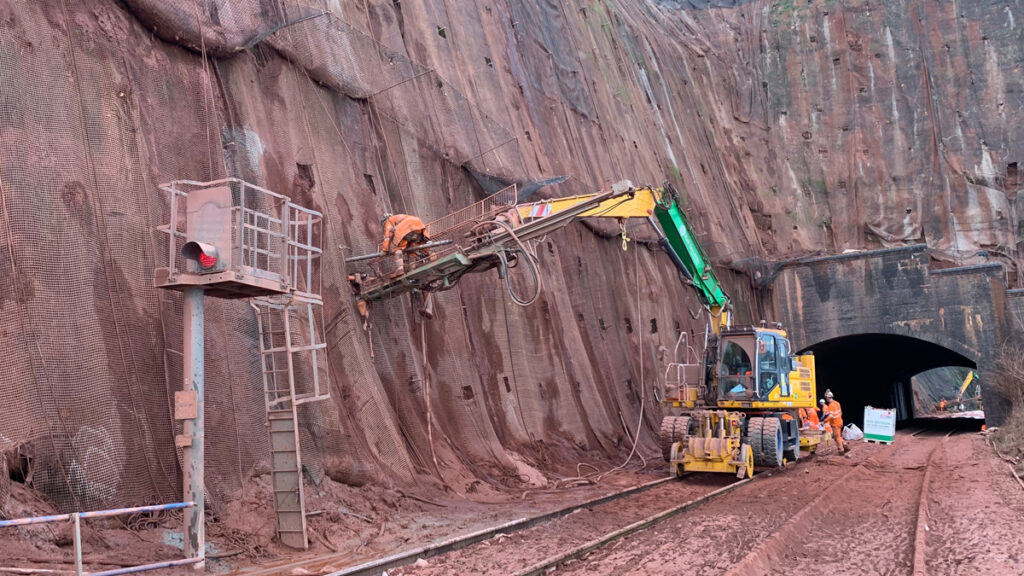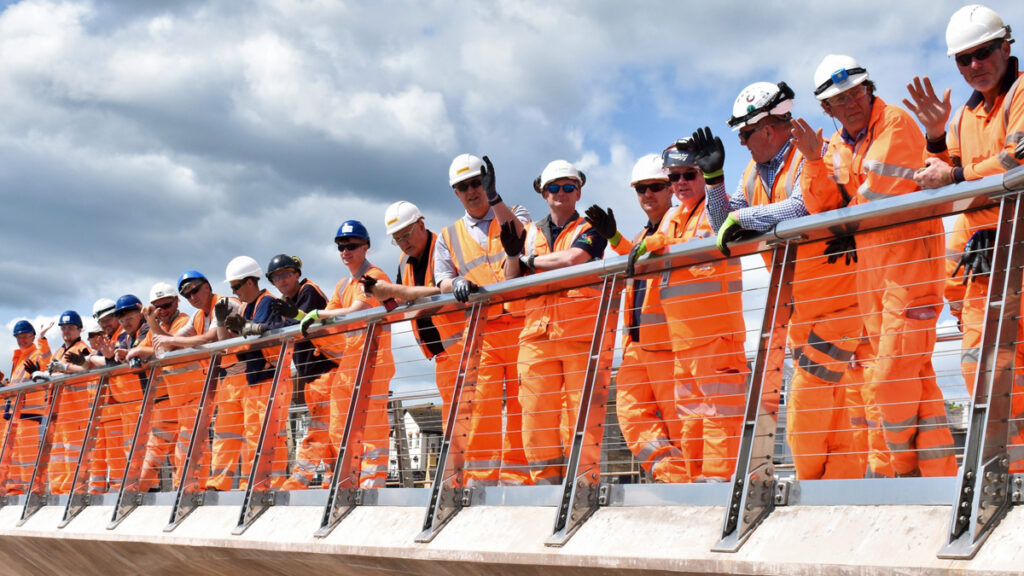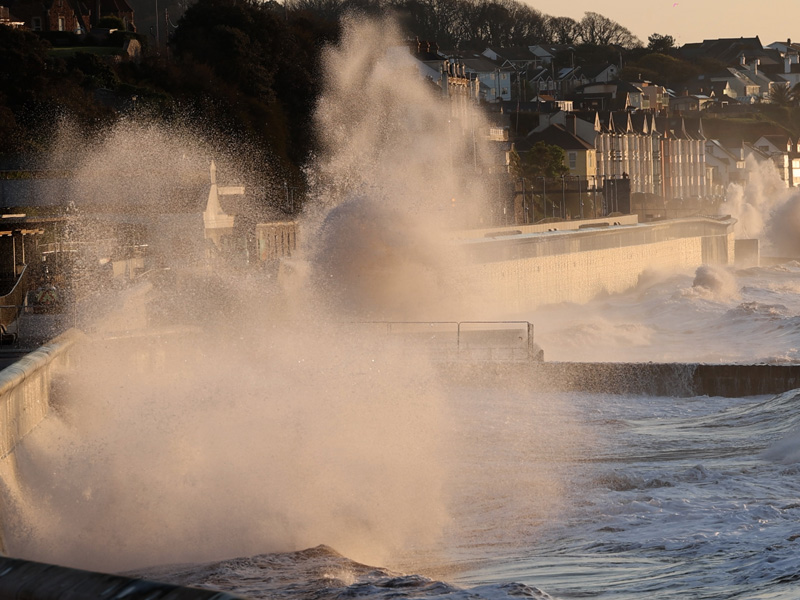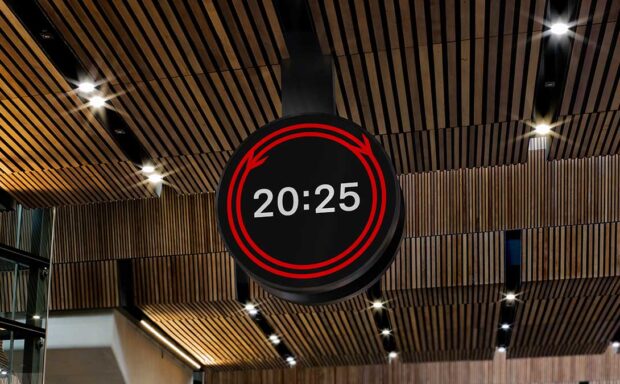It’s 10 years since a severe storm washed away part of the railway in Dawlish – and prompted a huge project to protect this line from extreme weather for generations.
On 4 and 5 February 2014, a devastating storm battered the south Devon coastline at Dawlish. It cut off the only railway line to the south west for eight weeks.
A bigger and better sea wall
Ten years on, with Department for Transport, we’ve invested £165m in making the line between Dawlish and Teignmouth more resilient to rising sea levels and extreme weather. A new, bigger sea wall is one of the most substantial projects built by the South West Rail Resilience Programme set up after the storm.
The wall was designed to deflect large waves back to the sea and that’s exactly what it did when Storm Ciarán hit with five-metre waves at high tide and more than 80mph winds.
An accessible station
We also improved Dawlish railway station as part of the project.
A new footbridge with lifts were installed, making the station accessible for everyone. You can also now enjoy the accessible, high-level 415m promenade all the way from Boat Cove to Coastguards footbridge, where it then joins the original sea wall.
A more resilient railway
Since 2019, the South West Rail Resilience Programme has delivered …
A stronger, taller sea wall for Dawlish stretching for 800m between Boat Cove and Coastguard’s breakwater, with a new high-level promenade, link bridge and curved design to deflect waves back to the sea.
A new footbridge with lifts at Dawlish station, making it fully accessible for the first time in its history.
A 109-metre rockfall shelter at the northern end of Parson’s Tunnel. It’s built from 185 pre-cast concrete units to protect the railway from the cliffs above.
The start of work to install 19,700 square metres of netting, secured by more than 6,000 soil nails, to improve cliff resilience between Dawlish and Holcombe.

A total of £5m allocated to develop plans for the railway between Parson’s Tunnel to Teignmouth, which has led to proposals to install cliff drainage and resilience measures, without moving the tracks away from the cliffs.
An extensive programme of work

On 4 and 5 February 2014, a ferocious storm battered the south Devon coastline in Dawlish including the railway track by the sea. This part of the railway runs through Dawlish in Devon and is the only line connecting most of the county and all of Cornwall to the rest of the network. The devastation left communities in 50 towns and cities across the south west peninsula cut off from the rest of the railway.
We were able to reopen the track just eight weeks later in April. A team of 300 Network Rail engineers worked around the clock to repair the line as quickly as possible.
Once the most critical phase of the restoration complete, we moved onto phase two. The second phase lasted until May 2023 and part of a much bigger programme of resilience work between Exeter and Newton Abbot. The bigger and stronger sea wall is now open for business and is helping us bring you a stronger, more reliable and modern railway.




